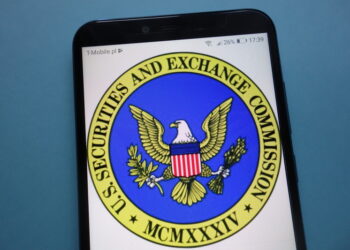There is a reason you need to incorporate storytelling into your marketing strategy.

People have been telling stories for tens of thousands of years. From cave paintings and Egyptian hieroglyphics to books, songs, plays, and movies, people have consistently used stories to communicate over time. When communicated effectively to a receptive audience, a story or narrative can inspire new ways of thinking, reinforce current beliefs, prompt people to take action, and even more.
Storytelling in action
What does it mean to select an audience, craft a message, use stories to reinforce it, and spread your message far and wide?
Take for example Nike’s core message of “just do it,” encouraging athletes to succeed and overcome adversity, reaching current and aspiring athletes of various skill levels. They partner with well-known athletes to reinforce their message.
Under Armour’s had a similar past campaign. It promoted the message “I Will What I Want,” which focused on athletes defying expectations and achieving their goals, which was different from the Nike message in subtle but important ways.
Apple’s “Think Different” campaign celebrated innovative achievers, showcasing examples of famous people who challenged the status quo. Their target audience was creative thinkers, entrepreneurs, and Apple supporters.
More recently, Airbnb promoted success stories about guests and hosts who use their platform and GoPro featured footage showing adventures and memorable experiences captured by their customers. Leveraging user-generated content in your advertising campaigns creates both brand identity and a sense of community among customers, and can provide content you couldn’t produce yourself.
Another important example of brand storytelling: Procter and Gamble launched their “Thank You, Mom” campaign during the 2010 Olympics. Instead of focusing solely on the Olympians, Procter and Gamble celebrated the mothers who raised them. The multi-faceted campaign generated $500 million in incremental sales for the corporation, 76 billion impressions worldwide, and over 370 million interactions on Twitter. It was the most successful campaign in the company’s 187-year history.
So what do you need to do to use the same strategies as these successful companies?
Know your audience
For a message to connect with a group of people, you need to understand their goals and also their frustrations. What strategies have they tried in the past? What worked and what did not?
Selling meat to vegetarians is obviously not going to work. Your message, story, and narrative absolutely must match your audience’s aspirations and address their pain points for maximum potential impact. Review what your audience has responded to in the past to get creative inspiration for your future messages to them.
Make your clients the star of the story
Place positive reviews, video testimonials, and other forms of encouraging feedback at the center of your storytelling efforts. Your client reviews serve as evidence of your value in the marketplace. Include your clients’ reviews in your marketing emails, paid ads, website, and other promotional material. In your marketing emails, you can easily start a section with a name like “Review of the Week” or “Review Spotlight.” You can combine the section with hashtags like “#ThankfulThursdays” for even more reach.
Whether you send an email, publish a social media post, record a podcast, create a website, write a blog post, or record a video, ask yourself how you are going to connect with your viewers, what is in it for them, and how can you tell a true story that will inspire them to take action.
Create your brand’s story
Explain why your unique selling proposition matters to potential clients.
How is your business special and unique, and how does that benefit your clientele?
Do you have more experience than others in your industry, and therefore can provide the best experience for your community?
Do you do the work for your clients instead of handing off the tasks to other people who are less familiar with them?
Do you contribute a percentage of your profits to a cause you believe in?
What is the “why” behind your business? Identify your core tenets and communicate how that purpose empowers your customer base.
Celebrate your business anniversary with gratitude as the core theme
Every year, post an anniversary message celebrating your years in business and thanking your clients for their continued support.
The message can say something as simple as, “Thank you for your support over the last [x] years! We are looking forward to serving you for years to come!” You can also discuss your mission and how your brand started to drive home brand values and affirm perception.
Now it’s your turn!
Do your best to tell an excellent, authentic story that inspires your community to take action.
Do you have marketing questions? Email Michael at michael@michaelguberti.com, and he will answer them during a future episode of his Marketing That Clicks podcast.




















